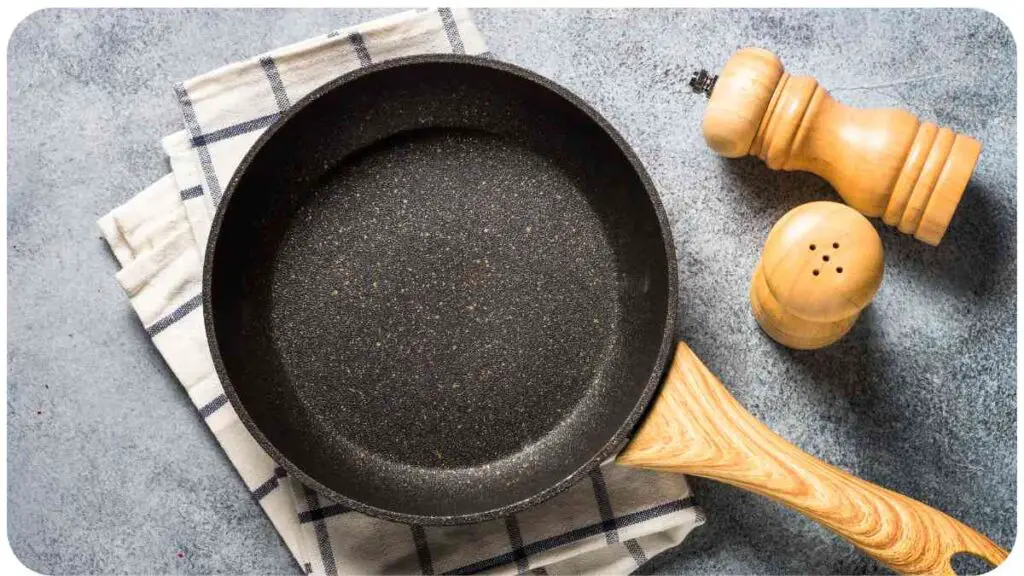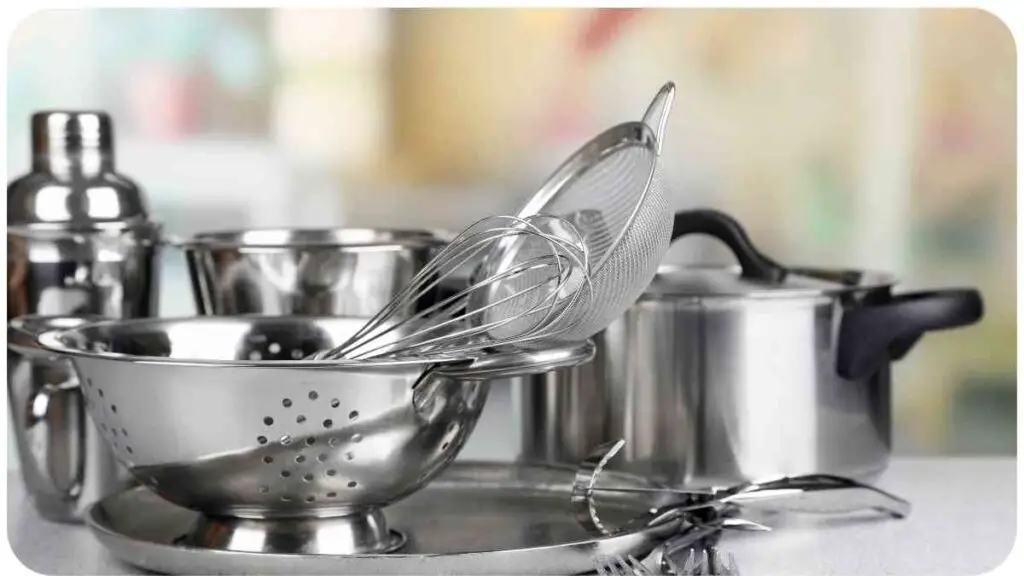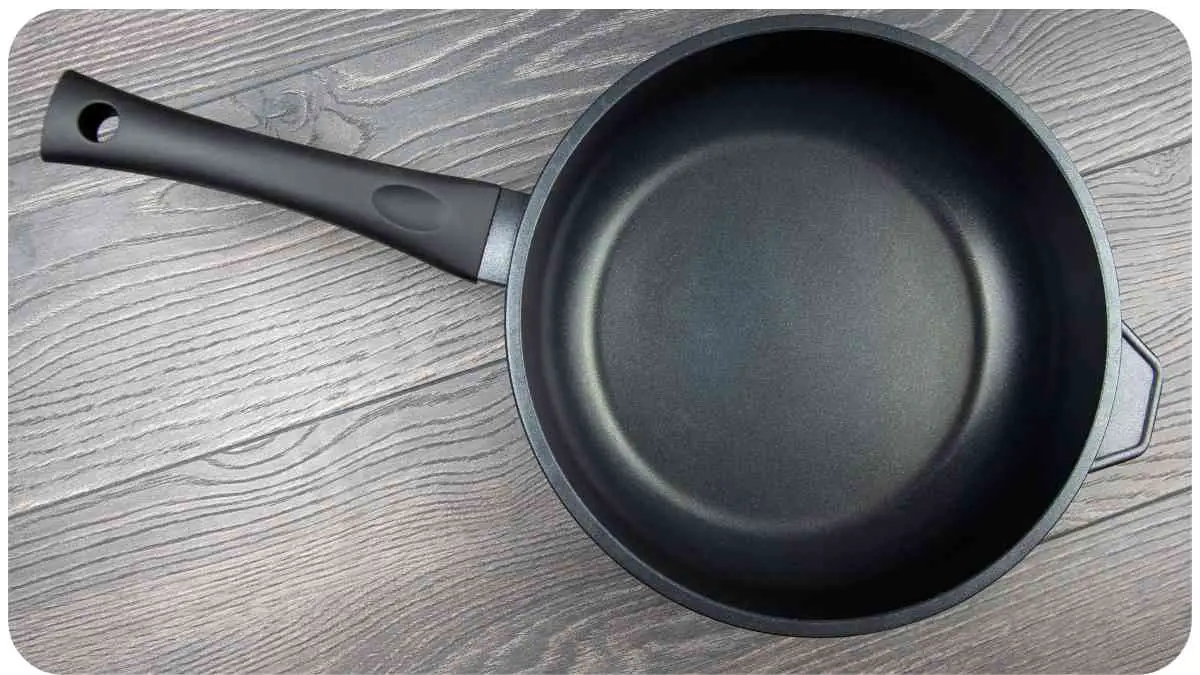Non-stick pans have become a staple in many kitchens, providing a convenient cooking experience and easy cleanup. However, concerns have been raised about the safety of these pans due to the chemicals used in their coatings.
This article aims to explore the safety of non-stick pans, discuss potential health concerns, and provide alternatives for those who are looking for safer cooking options.
| Key Takeaways |
|---|
| Understanding the safety concerns of non-stick pans and their potential health risks. |
| Avoiding overheating non-stick pans to prevent the release of toxic fumes. |
| Exploring alternative cookware options like stainless steel, cast iron, ceramic coated pans, and more. |
| Proper usage, maintenance, and care of non-stick pans to ensure safety and longevity. |
| Considering reputable brands that have phased out the use of harmful chemicals in their non-stick coatings. |
Understanding Non-Stick Pans
What Are Non-Stick Pans?
Non-stick pans, also known as Teflon pans, are coated with a layer of polytetrafluoroethylene (PTFE) or a similar substance. This coating helps prevent food from sticking to the surface, making cooking and cleaning a breeze.
Proper storage is essential for maintaining the freshness and quality of your fruits and veggies. Learn best practices to keep them at their prime for longer periods
How Do Non-Stick Pans Work?

The non-stick coating on these pans creates a barrier between the surface of the pan and the food being cooked. This prevents the food from sticking, reducing the need for excessive oil or butter and facilitating easy flipping of delicate foods like omelets and pancakes.
Potential Health Concerns
While non-stick pans offer convenience, some people worry about potential health risks associated with the chemicals used in the coatings. Let’s delve into some of these concerns and learn how to mitigate them.
Dull knives can make cooking frustrating and dangerous. Discover easy DIY tips to restore the sharpness of your kitchen knives with minimal effort
PFOA and PFOS
Previously, perfluorooctanoic acid (PFOA) and perfluorooctanesulfonic acid (PFOS) were used in the production of non-stick coatings. These chemicals were found to persist in the environment and can accumulate in the body over time. However, reputable brands phased out the use of PFOA and PFOS due to health and environmental concerns.
Teflon and Perfluorinated Chemicals (PFCs)
Teflon is a brand name often associated with non-stick pans. It is important to note that Teflon itself is not a concern. However, the manufacturing process of Teflon involves using perfluorinated chemicals (PFCs), which have been linked to health issues. Proper care and usage of non-stick pans can help minimize any potential risks.
High Temperatures and Off-Gassing
One of the main concerns with non-stick pans is the release of toxic fumes at high temperatures. When a non-stick pan is heated to extremely high temperatures (over 500°F or 260°C), the coating can begin to break down and release harmful chemicals. It is crucial to avoid overheating non-stick pans to ensure your safety.
Understanding food labels is crucial for making informed dietary choices. Dive into a comprehensive guide that breaks down the details and helps you make healthier decisions.
Flaking or Scratched Coating
Over time, the non-stick coating on pans can deteriorate or become scratched, potentially exposing the cooking surface to direct contact with food. It is advisable to replace pans with flaking or severely scratched coatings as soon as possible to maintain food safety.
Tossing Out Old Non-Stick Pans
If you have older non-stick pans and you’re unsure of the materials used in their coatings, it may be wise to replace them. With advancements in technology, newer non-stick pans are now available with safer coatings.
Recommendations for Safe Use
To ensure the safe use of non-stick pans, follow these recommendations:
- Always cook on low to medium heat, never exceeding the recommended temperature for your specific pan.
- Use appropriate utensils made of silicone, nylon, or wood to avoid scratching the coating.
- Avoid using aerosol cooking sprays, as they can cause the accumulation of residue that may degrade the non-stick coating.
Don’t fall for common nutrition myths that can hinder your health goals. Get the facts straight from this insightful article: Nutrition Myths Busted – know what’s true and what’s misleading.
Exploring Alternatives

While non-stick pans offer convenience, there are alternative cookware options available that can address the safety concerns associated with non-stick coatings. Let’s explore some of these alternatives:
Stainless Steel Pans
Stainless steel pans are a popular choice among many cooks. They are durable, corrosion-resistant, and do not release any harmful chemicals when heated. While stainless steel doesn’t have non-stick properties, using a bit of oil or butter can help prevent food from sticking to the surface.
Cast Iron Pans
Cast iron pans are known for their excellent heat retention and even heating. These pans require seasoning to develop a natural non-stick surface. Seasoning involves coating the pan with oil and heating it, allowing the oil to polymerize and create a protective layer. With proper care and maintenance, cast iron pans can offer a natural non-stick cooking experience.
Ceramic Coated Pans
Ceramic coated pans have a non-stick surface that is free from PFOA and PFOS. The ceramic coating is derived from natural materials and provides a safe cooking surface. These pans require gentle usage and handwashing to maintain their non-stick properties.
Seasoned Carbon Steel Pans
Similar to cast iron pans, carbon steel pans require seasoning to develop a natural non-stick surface. These lightweight pans heat quickly and can handle high temperatures, making them ideal for searing and stir-frying.
Anodized Aluminum Pans
Anodized aluminum pans have been electrochemically treated to create a hard, non-reactive surface that resists scratching and corrosion. These pans offer excellent heat distribution and can be a safe alternative to non-stick pans.
If you’ve ever been puzzled by the symbols on your oven, worry no more. Gain a better understanding of their meanings with this comprehensive guide to make your cooking experience more enjoyable and effortless
Copper Pans
Copper pans are known for their superior heat conductivity, allowing for precise temperature control. However, pure copper pans require lining with a non-reactive material like stainless steel to prevent interaction with food. Copper-infused pans offer the benefits of copper while being safer for cooking.
Glass Pans
Glass pans are inert and do not release any harmful substances when heated. They are a great option for baking and cooking dishes that require slow and gentle heat.
Stone-Derived Non-Stick Pans
Stone-derived non-stick pans are coated with a layer of natural mineral particles, typically derived from granite or sand. These pans provide a non-stick surface without the use of chemicals, offering a safer cooking experience.
Silicone Pans
Silicone pans are flexible and easy to clean. They are safe to use in ovens and microwaves and provide a non-stick surface without the need for oil or butter.
Now that we have explored some alternative options to non-stick pans, let’s compare a few popular brands in the table below:
| Brand | Key Features | Price Range |
| Brand A | Scratch-resistant, even heating | 50 |
| Brand B | Ceramic coating, easy to clean | 60 |
| Brand C | Cast iron, natural non-stick | 70 |
These are just a few examples, and various brands offer different features and price ranges to suit your cooking needs and budget. It’s important to research and consider the specific requirements you have in a cookware before making a decision.
Tips for Safe Use and Care
To ensure the longevity of your non-stick pans and maintain a safer cooking experience, keep the following tips in mind:
Preheating and Cooking Temperatures
Preheat your non-stick pan on low to medium heat before adding any ingredients. Avoid using high heat as it can cause the non-stick coating to degrade.
Using Proper Utensils
When cooking with non-stick pans, use utensils made of silicone, nylon, or wood to prevent scratching the coating. Avoid using metal utensils that can damage the non-stick surface.
Cleaning and Maintenance
Hand wash your non-stick pans using mild dish soap and a soft sponge or cloth. Avoid using abrasive cleaners or scrubbers that can scratch the coating. Do not stack pans when storing to prevent scratching.
Storage of Non-Stick Pans
Store your non-stick pans in a cool and dry location. If possible, place a soft cloth or paper towel between pans to prevent scratching when stacked.
Avoiding Overheating
Never leave an empty non-stick pan on a heated burner for an extended period. Overheating may damage the coating, releasing harmful chemicals and compromising the non-stick properties.
By following these tips, you can maximize the longevity and safety of your non-stick pans.
Conclusion
In conclusion, the safety of non-stick pans depends on proper usage, maintenance, and understanding of their potential health concerns. While older non-stick pans may have used chemicals of concern, reputable brands have phased out the use of these chemicals, making newer pans safer to use.
To minimize potential health risks, it is important to avoid overheating non-stick pans and maintain them properly. Using alternative cookware options such as stainless steel, cast iron, ceramic coated pans, or seasoned carbon steel pans can also provide safer alternatives for cooking.
When exploring non-stick pan brands, it’s essential to consider key features, such as scratch resistance, even heating, and the type of coating used. Comparing different brands based on your cooking requirements and budget will assist you in making an informed decision.
By following safe usage and care practices, including preheating on low to medium heat, using appropriate utensils, and gentle cleaning, you can maintain the integrity of your non-stick pans for a longer lifespan.
Remember, cooking utensils and techniques play a significant role in maintaining a healthy cooking environment. Incorporating a variety of cookware options into your kitchen can provide you with flexibility and diversity while ensuring your safety.
In the end, it is essential to balance convenience and safety when choosing cookware for your kitchen. With the right knowledge and practical tips, you can make informed decisions that prioritize the health and well-being of you and your loved ones.
Further Reading
Here are some additional resources you can explore to learn more about the safety of non-stick pans:
The Atlantic: So, Are Nonstick Pans Safe or What? A comprehensive article from The Atlantic that delves into the safety considerations of non-stick pans, addressing common concerns and providing expert insights.
USA Today: Are Nonstick Pans Safe? This article from USA Today provides an overview of the safety concerns associated with non-stick pans and offers tips for safe usage.
Scientific American: Are Nonstick Pans Safe? Scientific American explores the science behind non-stick pans and evaluates the safety aspects of their use.
FAQs
Here are some frequently asked questions about non-stick pans and their safety:
Can non-stick pans release toxic fumes when overheated?
Yes, when non-stick pans are heated to extremely high temperatures, they can release fumes that may be harmful. It is essential to avoid overheating non-stick pans to ensure your safety.
What are some alternatives to non-stick pans?
There are several alternatives to non-stick pans available, such as stainless steel pans, cast iron pans, ceramic coated pans, and seasoned carbon steel pans. Each option has its own unique features and benefits.
How can I safely clean non-stick pans?
It is recommended to hand wash non-stick pans using mild dish soap and a soft sponge or cloth. Avoid using abrasive cleaners or scrubbers that can damage the non-stick coating.
Can scratched non-stick pans be used safely?
If a non-stick pan is severely scratched or flaking, it is advisable to replace it. Cooking on a damaged non-stick surface may expose the food to direct contact with the underlying material, potentially compromising safety.
Are non-stick pans safe for everyday use?
When used and maintained correctly, non-stick pans can be safe for everyday use. However, it is important to follow usage guidelines and avoid overheating the pans to minimize potential health risks.

Hi, I’m Hellen James! I’m a professional chef who has been cooking for over 12 years. In my career, I’ve worked at some of the world’s most prestigious hotels and restaurants. My expertise lies in creating recipes that are simple but delicious, and I love to experiment with new ingredients and techniques. I started this blog because I want to share my passion for cooking with everyone who loves food as much as I do.


